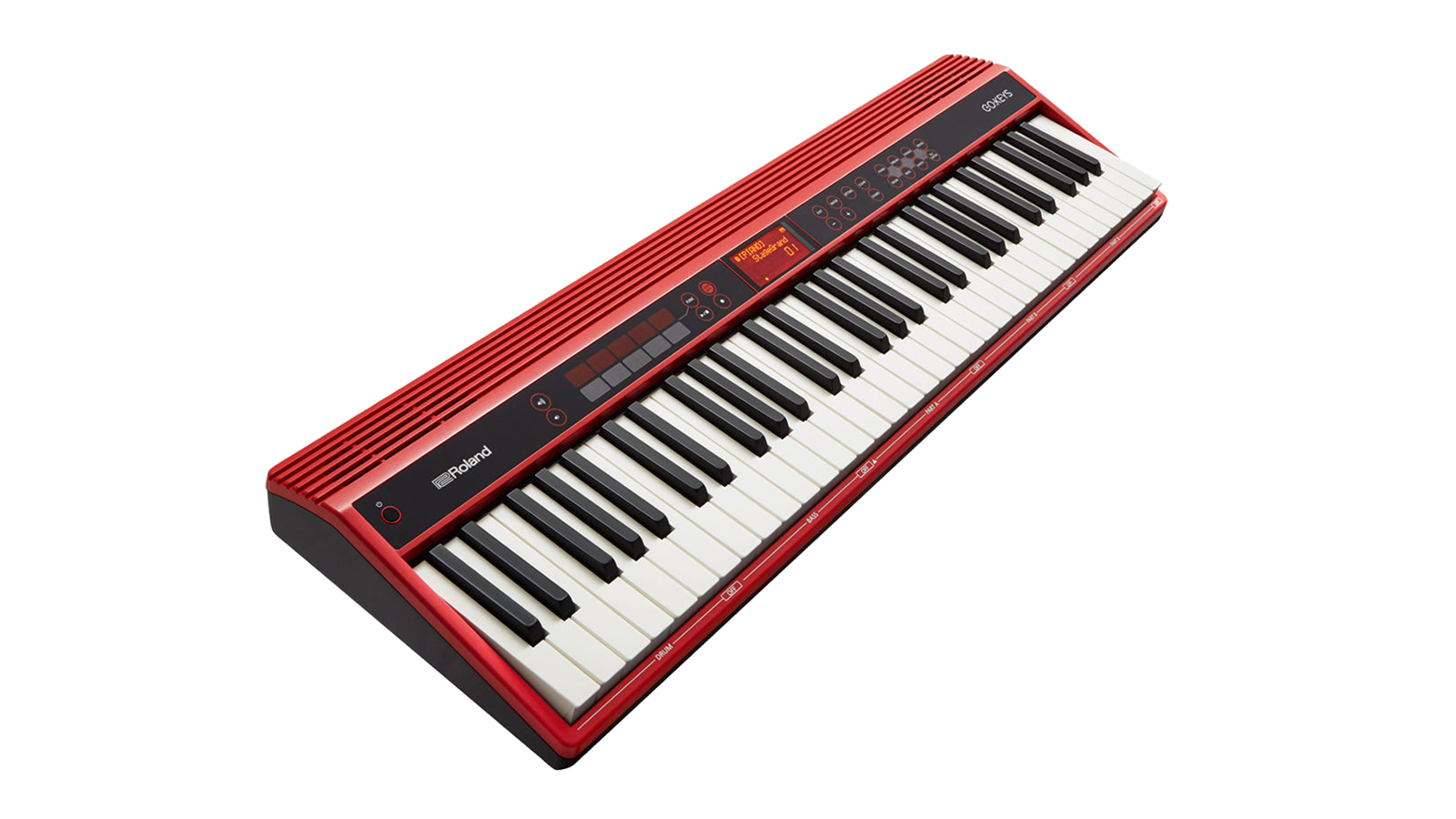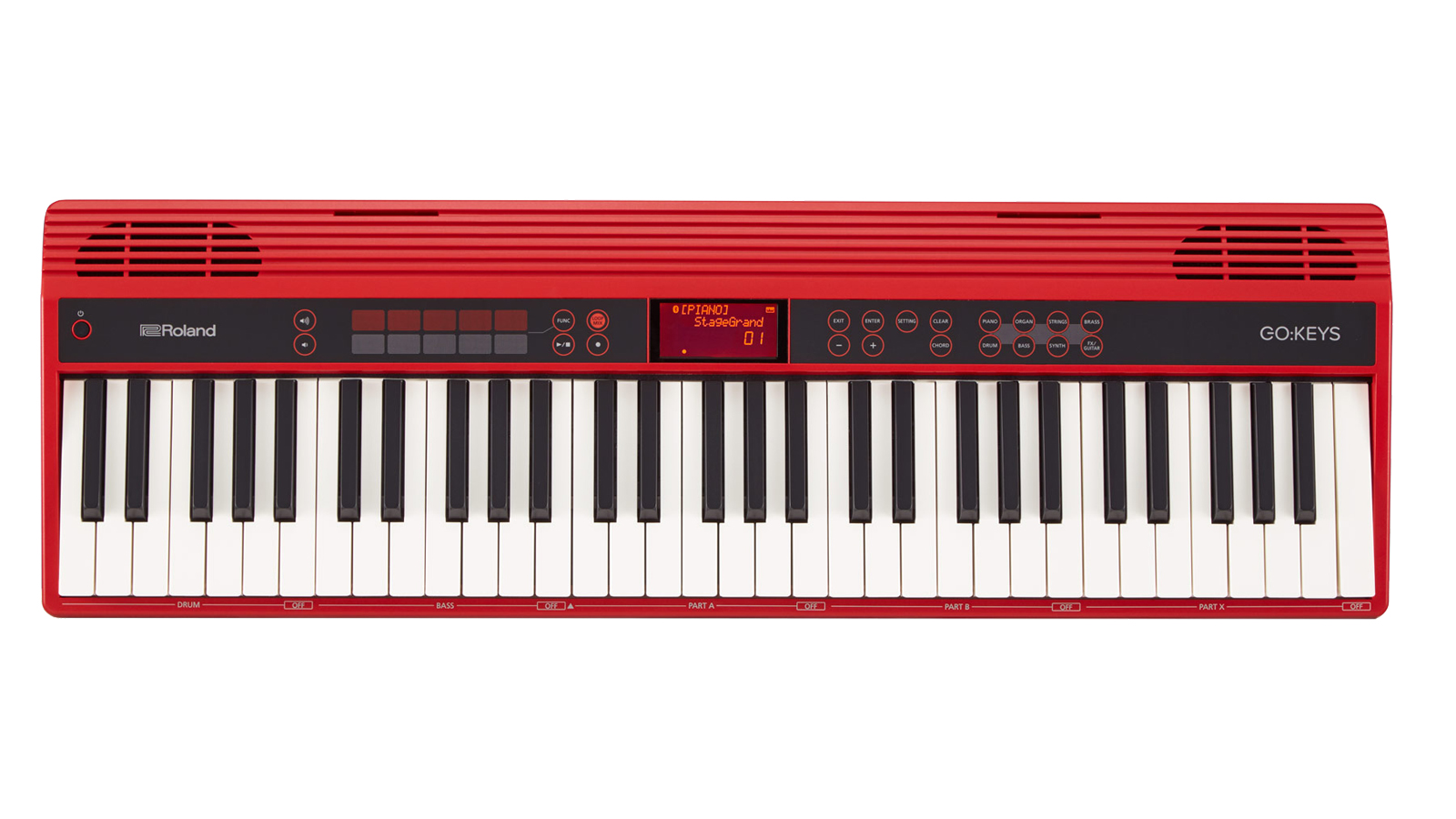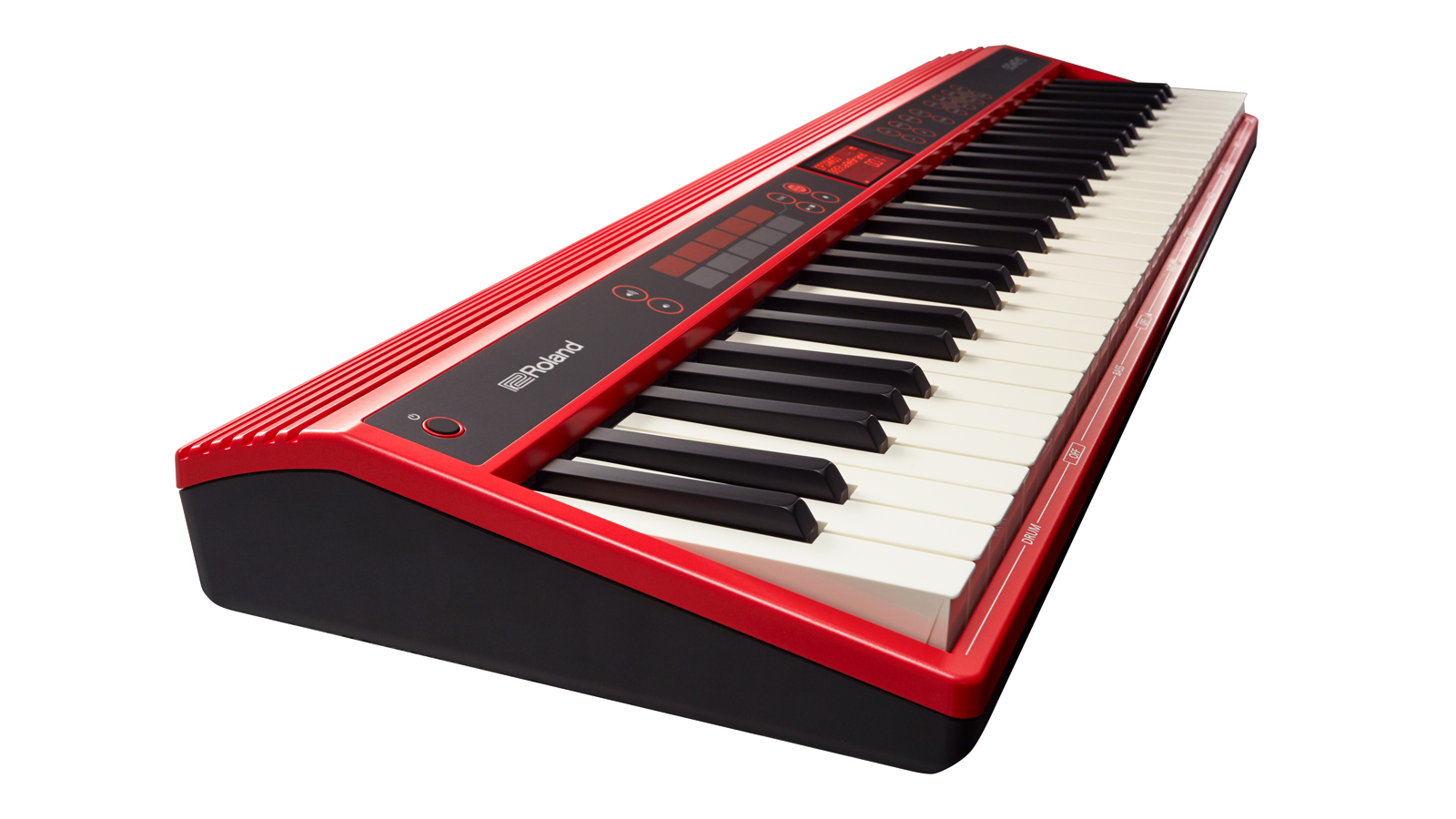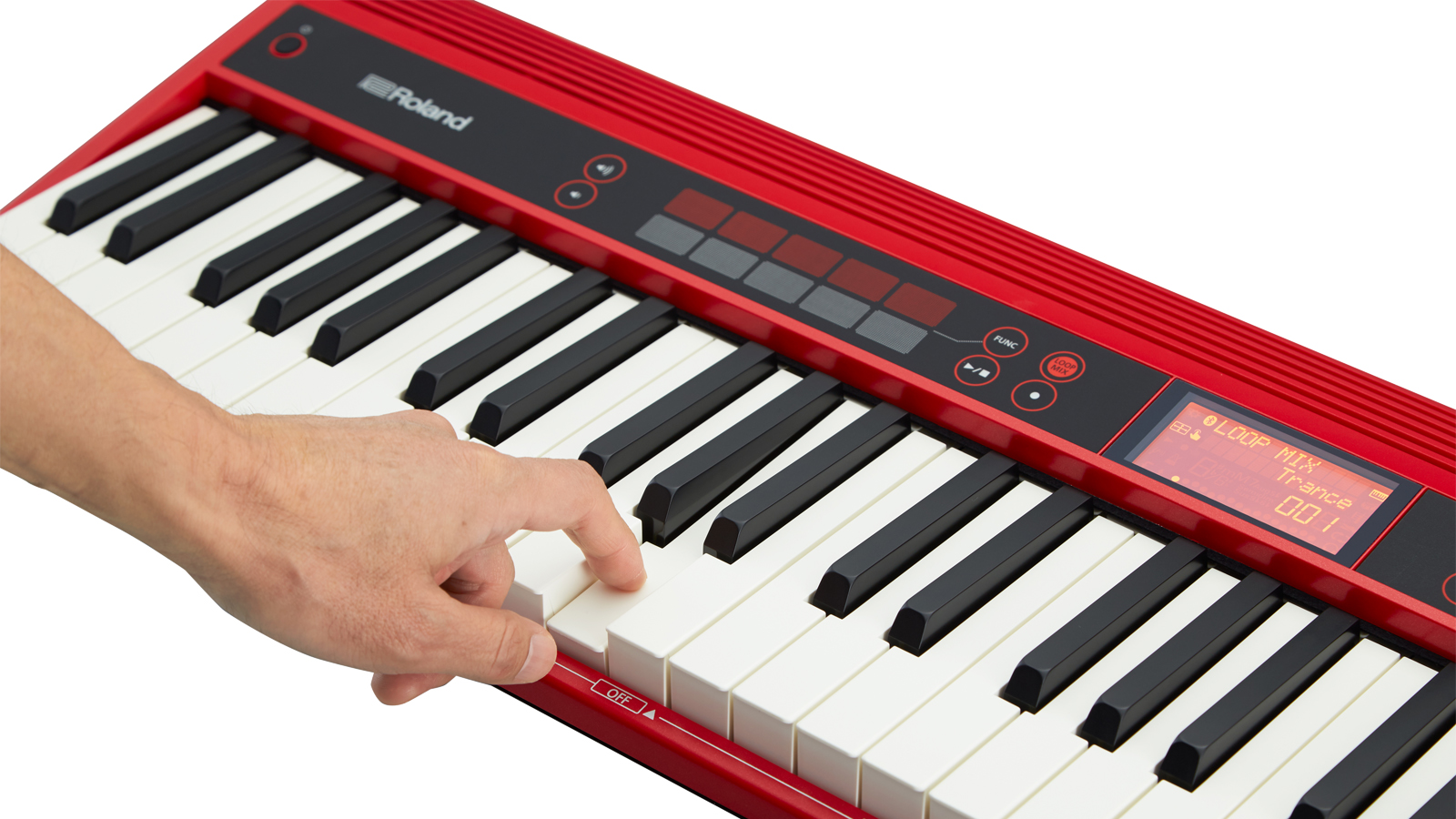MusicRadar Verdict
Roland’s unique and entertaining take on the portable arranger keyboard has something for everyone.
Pros
- +
Lightweight and portable
- +
Over 550 sounds
- +
Bluetooth audio streaming
- +
Fun Loop Mix function
Cons
- -
No editing of sounds
- -
Speakers a bit tinny
MusicRadar's got your back
Roland GO:Keys GO-61K review: What is it?
Roland’s GO portable beginner keyboards are aimed at those just starting out on their playing journey, and the range consists of two distinctly different models. While the GO-61P (or the Roland GO:PIANO GO-61P to give it the full name) beginner digital piano caters for budding pianists with more piano-focussed sounds and no onboard auto-accompaniment features, the GO-61K music creation keyboard reviewed here is more about plunging in and instantly having fun, with a range of fairly unique features intended to make playing keyboards inspiring and enjoyable without the need for any prior musical knowledge.
The GO-61K definitely looks the part, with its snazzy red casing taking styling cues from the Nord and Korg schools of keyboard design. It’s incredibly lightweight and compact, yet feels reassuringly solid; the only place where there’s any ‘give’ in the plastic is along the bottom of the fascia above the top of the keyboard.
The 61-note, full-size waterfall-profile keyboard, although perfectly playable, has quite a unique feel, somewhere between synth action and semi-weighted, with a fairly shallow travel and a textured ‘ivory’ feel to the key surface. There’s an onboard 8-track recorder that can store up to 99 songs and/or 30,000 notes, and you can power the unit either with the supplied mains adapter or with six AA batteries. Battery life is a claimed 6 hours, which really does put the GO into GO:KEYS.
Roland GO:Keys GO-61K review: Performance & verdict

The GO-61K has its own built-in pair of 2.5W speakers, one at each end of the casing. Although fairly powerful, the speakers’ sound quality was a little disappointing, with Rhodes sounds in particular suffering from a little mid range woolliness and audio streamed over Bluetooth from a mobile phone sounding a little scratchy and lacking in low end. Plug in a set of headphones, however, and the sound quality improves substantially.
The sound selection on the instrument is plentiful, with over 550 presets derived from Roland’s JunoDS synth scattered across eight categories (Piano, Organ, Strings, Brass, Drum, Bass, Synth and FX/Gtr). Although we found the Grand Piano offerings to be a little lacking in body, the sheer variety of other tones on offer tipped the balance, especially when you consider that the GO-61P is the model to opt for if you’re after a serious piano sound. It’s great to see re-workings of classic sounds, like the D50’s Staccato Heaven and Fantasia presets, included here, but we would have liked to have seen at least some basic ADSR editing functionality for these.
Getting around
Overall, we found the front panel well laid out and easy to navigate, and the keyboard as a whole is a breeze to use. With just a cursory glance at the quick start guide we were off and running, playing with all the different combinations in Loop Mix mode, switching sounds and jamming, streaming songs to play along with from our iPhone and generally having a great time.

That’s not to say that we didn’t come up against a few niggles. The performance touch pad controls are a little harder to get to grips with, the pitch bend and modulation proving somewhat laggy. We found ourselves wishing for a hardware pitch and modulation bender, as found on many Roland synths, to take care of real time performance duties, although the pads do double up as filter / note repeat FX controllers.
Also, many parameters, from the overall reverb level to the unit’s Bluetooth status to the currently selected octave, are buried in a chain in the Setting menu, accessed by repeatedly clicking a single button. If you go past the setting you want, there’s no going back - you just have to keep on clicking through the numerous options until cycle back round to your chosen destination parameter. Having the octave shift control buried in this menu is especially frustrating - we would have preferred to have a dedicated pair of buttons on the panel for this, as found on the GO-61P.

If you’re thinking of getting one of these for a child or teenager to start out on, let’s just say that the Bluetooth features are a big selling point
If you’re thinking of getting one of these for a child or teenager to start out on, let’s just say that the Bluetooth features are a big selling point. Pairing the keyboard to a nearby device, such as a mobile phone or tablet, is simple to achieve. Once connected, you can stream audio from your device through the speakers in the GO-61K and play along using the currently selected sound. When we showed a 14 year old musical ingenue how to jam along to her favourite three-chord wonders from the playlist on her phone, she was instantly hooked, and moved to admit that she now wished she’d taken Music as a GCSE instead of History - quite a result! The GO-61K also features MIDI via Bluetooth, enabling it to be used wirelessly as a controller for apps like GarageBand, for instance.
In the mix
Another unique selling point for the GO-61K is the Loop Mix function. This is somewhat akin to the auto-accompaniment features found on arranger keyboards from the likes of Yamaha and Casio. You enable Loop Mix mode with the press of a button, after which each octave on the keyboard is used to select a loop from a different category. For example, each key in the octave C1-B1 triggers a different drum loop, next octave up, in C2-B2, the keys trigger bass parts, and the upper three octaves are each dedicated to other individual instrumental parts.

You can choose from a variety of 22 genres via the front panel +/- buttons, with a different set of loops available for each genre, which go from Trance to J-Pop via Hip-hop and Reggaeton to name just a few. Once you have a groove going, you can either jam over the top with the selected sound across the entire keyboard, or enter Chord mode, in which the lower octave lets you dictate which chord the virtual band is playing while you use the upper part of the keyboard to solo and play melodies over the top.
Overall, this feature works really well. It’s a lot of fun and pretty entertaining whatever level you play at, and the patterns have been programmed to a standard that just about elevates them above the cheese level that’s often associated with this kind of thing.
With the GO-61K Roland have put their own spin on the traditional arranger keyboard and in doing so have created an instrument that’s relatively unique, entertaining, fun and easy to use whatever your level of playing, but particularly appealing to beginners. With a free 3-month subscription to the Skoove online piano lessons platform included to sweeten the deal, if you’re just starting out as a keyboardist or just want a simple, fun, quality keyboard for writing or practising on out of the house, we’d recommend giving this keyboard a GO.
Roland GO:Keys GO-61K review: Hands-on demos
Sweetwater
PMTV UK
Jammstudiomusic
Roland GO:Keys GO-61K review: Specification
- Keys: 61 Full-size, velocity sensitive
- Speakers: 2 x 2.5W
- Polyphony: 128 voice
- Connectivity: Phones out, AUX in, Pedal, USB to host, Bluetooth 4.2
- Dimensions: 877 x 271 x 82 mm
- Weight: 3.9kg
- Contact: Roland
Dave has been making music with computers since 1988 and his engineering, programming and keyboard-playing has featured on recordings by artists including George Michael, Kylie and Gary Barlow. A music technology writer since 2007, he’s Computer Music’s long-serving songwriting and music theory columnist, iCreate magazine’s resident Logic Pro expert and a regular contributor to MusicRadar and Attack Magazine. He also lectures on synthesis at Leeds Conservatoire of Music and is the author of Avid Pro Tools Basics.
“I used everything I knew about music”: How Green Day exceeded expectations with their most ambitious song
YouTube just added AI tools that makes musicians, library music and video editors redundant
“Every one of them said yes without hesitation": Hank Marvin and Roger Taylor have just remade a '60s classic for charity














